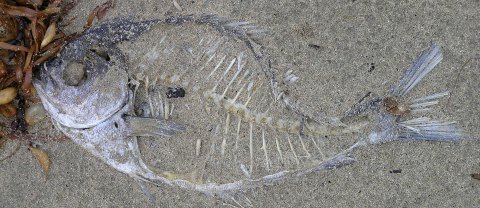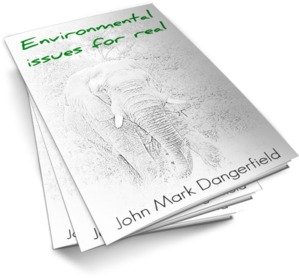Home | About CCW | Contact Us | Climate change Meaning | Causes | Solutions | Emissions | Carbon trading
Conservation climate change
Conservation climate change is a risky combination and yet climate change helps to create the variety of life we seek to conserve.
This is an awkward situation. On the one hand variation in climate can result in local loss of species and even extinctions and yet without variation there is less diversity. It is a balance that we have yet to fully understand.
Over the millennia climate change has created natural disturbance that is an important driver of evolution. Without alterations to the standard sequence there would be far less variety of life to conserve.
When the normal run of weather and seasons are disturbed some organisms cannot cope and die out. Gaps are created that other species exploit. Sometimes this exploitation requires some new adaptations and where these stick over generations, new species can emerge.
Here is an example.
There are 25 species and 34 subspecies of forest guenons (a group of primates belonging to the genus Cercopithecus) in the rainforests of West Africa.
The current hypothesis to explain this extraordinary biodiversity is cyclical climate change.
The idea is that during cool times the rainforest was reduced to isolated fragments that allowed allopatric speciation - this is evolution as a result of geographic isolation and a common way that new species arise.
Then when the climate warmed again, the forest spread out to cover large tracts of Africa and the guenons spread out with it. Only after generations of isolation they could no longer interbreed and stayed as separate species.
Eventually the more successful species may outcompete the others but for a time there are many different species sharing the same forest.
Rapid climate change is a big disturbance
It is a little different with abrupt climate change. .
Rapid changes to rainfall and temperature and to the frequency and intensity of extremes mean that habitats are altered, comfort zones shift and extreme events put pressure on species.
The disturbance to create opportunity can become disturbance that causes extinction events - in the long term a big opportunity for evolution, in the short term a problem for conservation.
In this sense conservation climate change makes conservation harder - not least because change is the opposite of conservation.
The human dimension
As human numbers and affluence grow we use up more of the world resources and places.
Each hour of each and every day there are roughly 9,000 more people added to the global population. And each year economic activity expands.
Indeed when it doesn't we panic and exclaim "crisis!"
More people with growing affluence, has made finding space for biodiversity, wilderness and the renewal of natural resources harder and harder.
Just when we can point to some successes and to a growing awareness that looking after species and habitats is important, the frequency and intensity of physical extremes put species and habitats at risk.
Imagine all the human effort and sacrifice that goes into creation of a nature reserve only for the temperature and rainfall conditions to change and make the area unsuitable for the species the reserve was set to protect.
Another awkward problem.
Find out more about environmental issues including population growth on the Ask Alloporus website
What to do about conservation climate change?
So far the focus for preservation and protection effort has been on preventing losses and trying to reduce threats to future loss from climate change, especially in vulnerable habitats.
A good example is alpine systems that will shrink in size as conditions warm up.
Some of the practical conservation actions include:
- the creation of habitat corridors that link across the landscape between patches of natural habitat to help vulnerable organisms move
- reserve design efforts that allow for the climate to change and stil retain some of the target habita
- adaptive natural resource management that sees more thoughtful use of resources
- resilience thinking that seeks to manage landscapes for their innate ability to cope with change
Much of this was already part of responses that reduce the impacts of global changes (the consequences of large numbers of people seeking economic returns) that has been part of the international development speak for a generation.
And there are many good examples of it being effective - David Suzuki and Holly Dressel describe several in their excellent book Good news for a change.
The task for conservation climate change will be to take more and more of these actions.
Conservation climate change is an opportunity
It may seem odd but if we accept that climate change will happen and that it will be severe in some parts, both in intensity and speed, then to have climate change adaptation we must think a little differently.
We will need to think
- on larger scales of time and space
- across all activities
- about processes as well as objects
- about using some of the funds that climate change mitigation will generate to support conservation
Do these things around conservation climate change and conservation becomes an embedded outcome, a key deliverable from improved management of the environment.
The kind of funds that will be spent on climate change mitigation (greenhouse gas emission reductions ), abatement (avoided emissions), biosequestration, and adaptation are huge. Already there are commitments for adaption funds in the billions of dollars.
Much of this money will help to preserve forests and improve agricultural practices.

In the end
Anthropogenic climate change will bring new challenges to natural habitats and the species that live in them and to the production landscapes that we rely on for our well-being.
Climate change will make traditional conservation harder but it also offers a huge opportunity for good.
Here are some more Climate-change-wisdom pages on this theme...
Adaptive capacity | Species loss | Biodiversity | Polar bears and climate change | Environmentalism | Biodiversity loss | Forest loss
More reading from CCW
Environmental Issues for Real by Dr J. Mark Dangerfield looks at some of the obvious, and some of the not so obvious, challenges for a growing human population living as we do in a finite world.
Only this time it's not about the impending disasters or the guilt or the blame.
This time, it’s 10 brief essays that are about the bigger picture. In less than an hour you could glimpse something different, a view that we can only see when we take a fresh look.
Download your copy at Smashwords
Back to top of Conservation climate change | Back to Climate-change-wisdom home page
Recent Articles
-
Reducing emissions while looking for solutions...
Nov 01, 15 04:46 PM
I've seen a lot of post's online for ideas on reducing emissions. The one suggestion I have not seen, is the most obvious. There should be a government -
Climate change evidence
Mar 24, 15 06:22 AM
Real climate change evidence has to demonstrate a change in climate. An extra sunny day or a severe storm or a flood is not enough. -
The climate change effect
Feb 19, 15 03:08 AM
What will be the climate change effect? There isn't one, there are many. Perhaps too many for us to understand.




New! Comments
Have your say about what you just read! Leave me a comment in the box below.